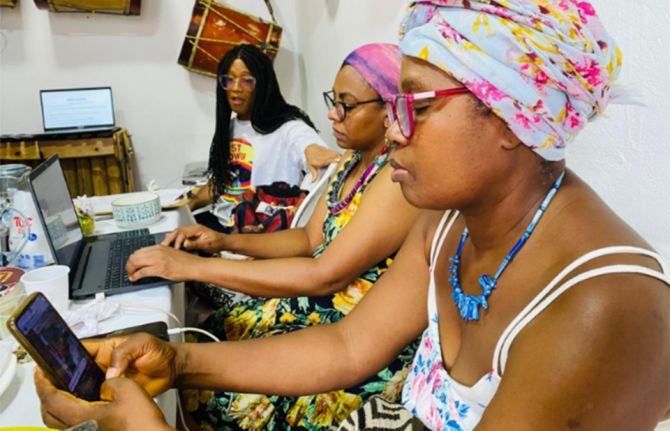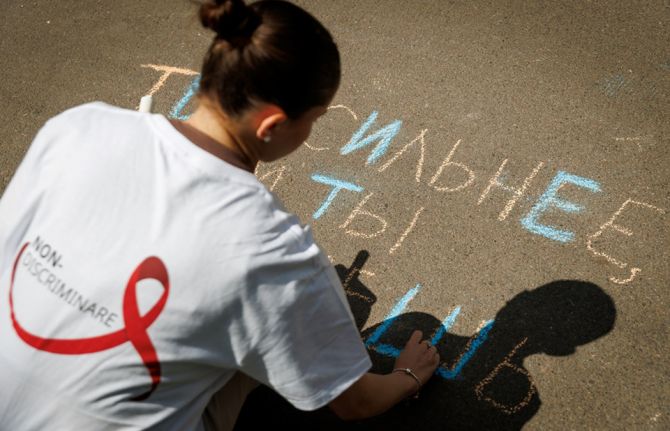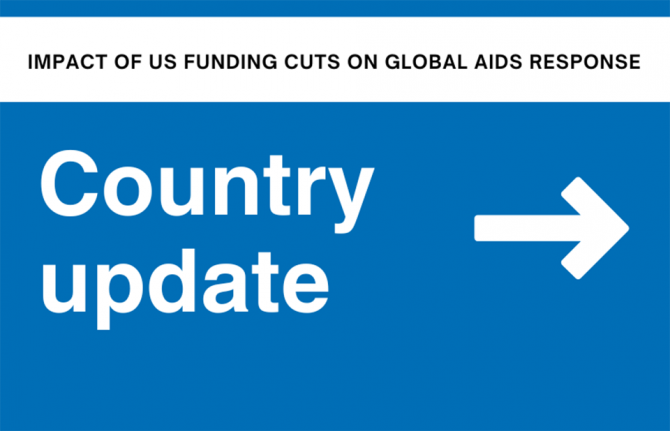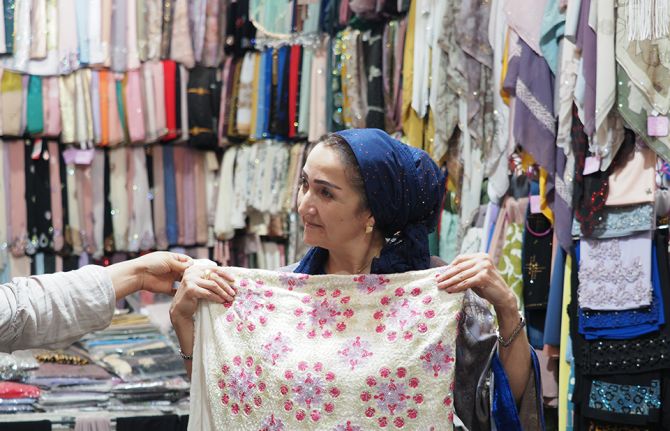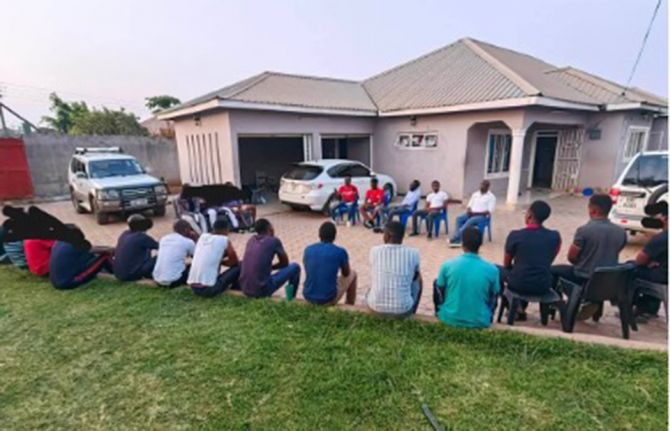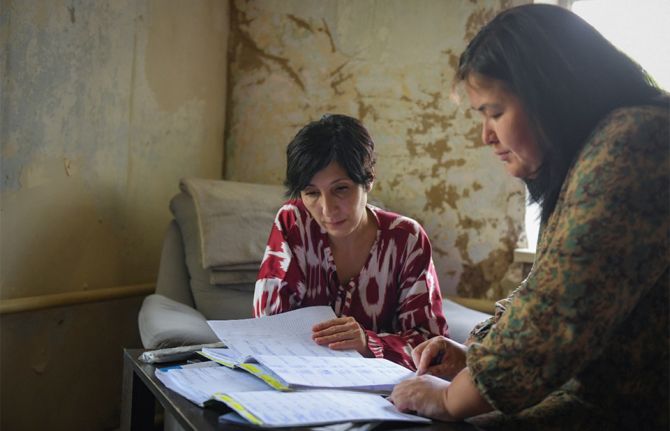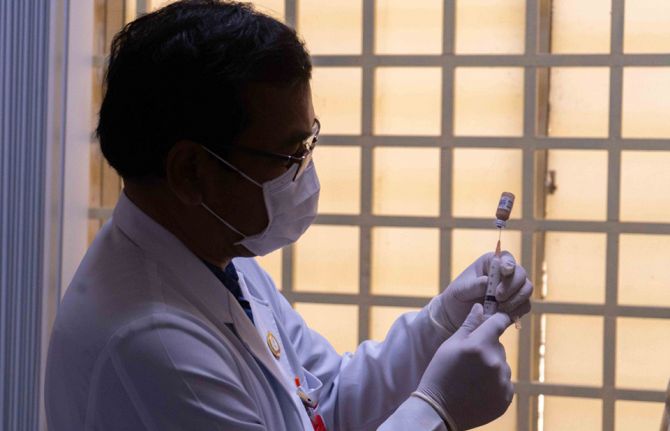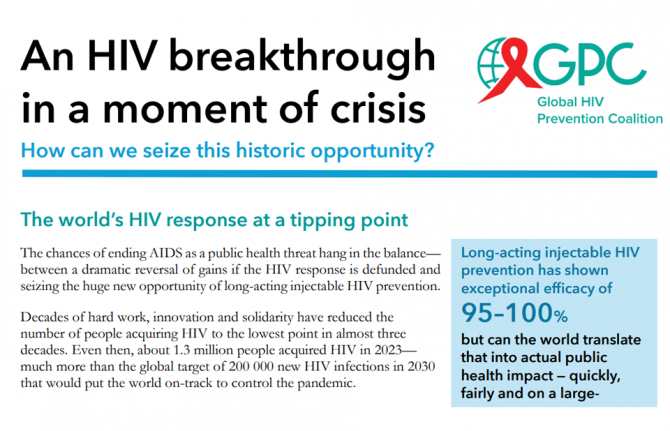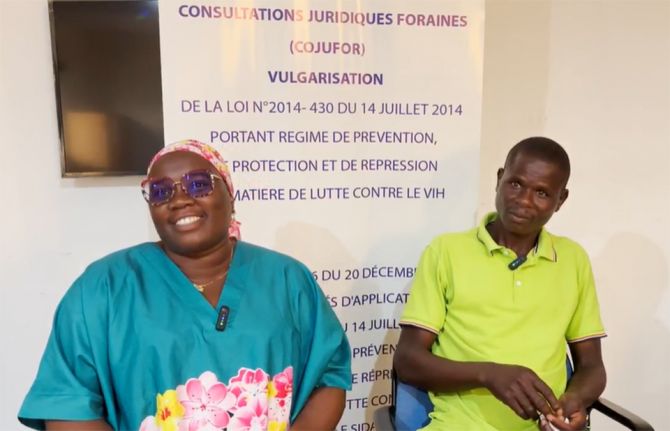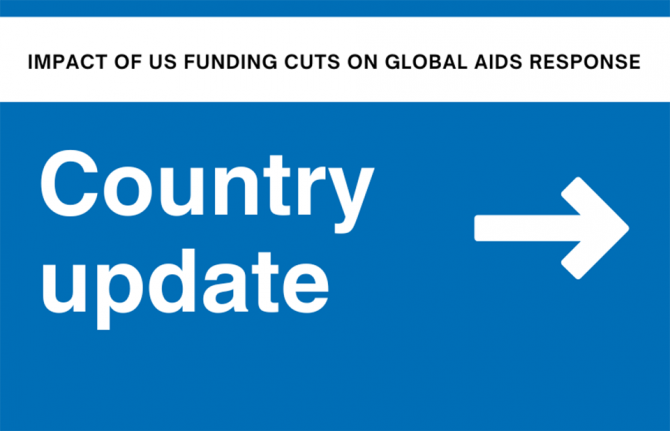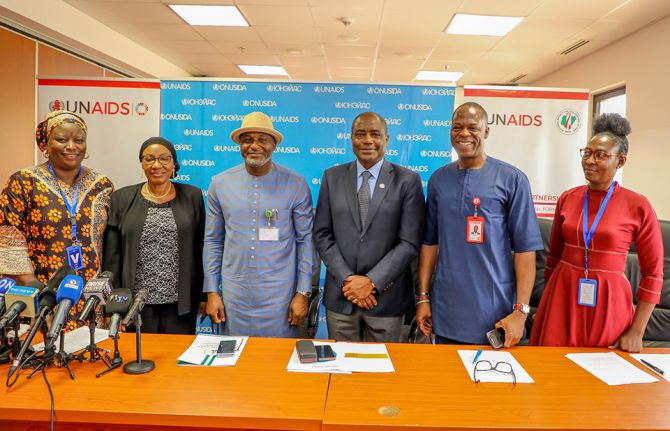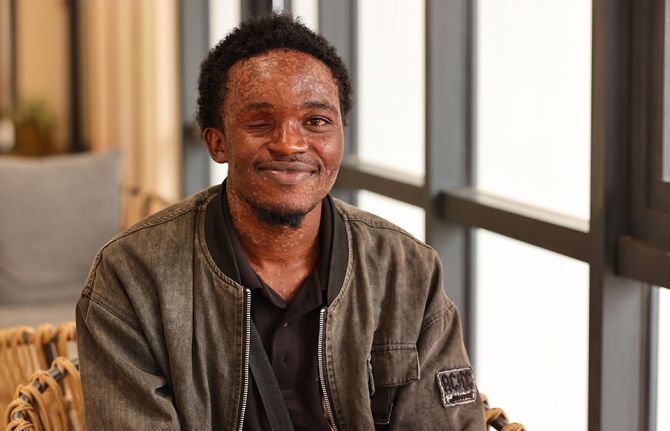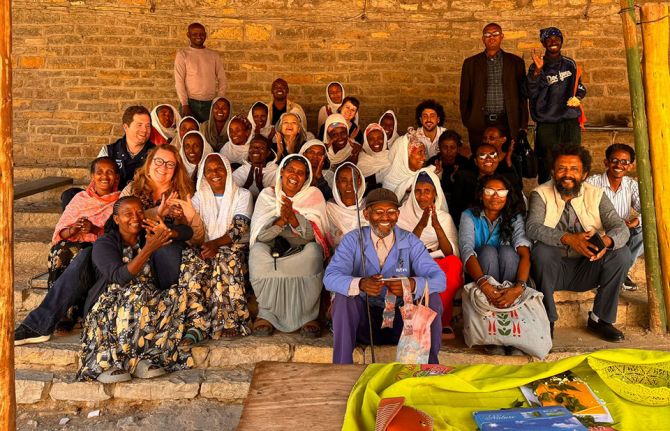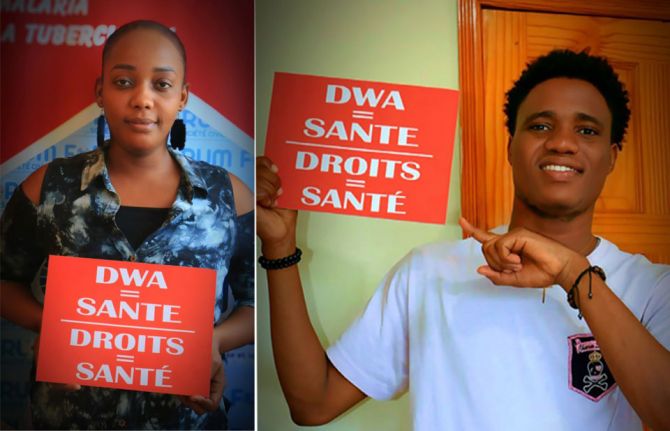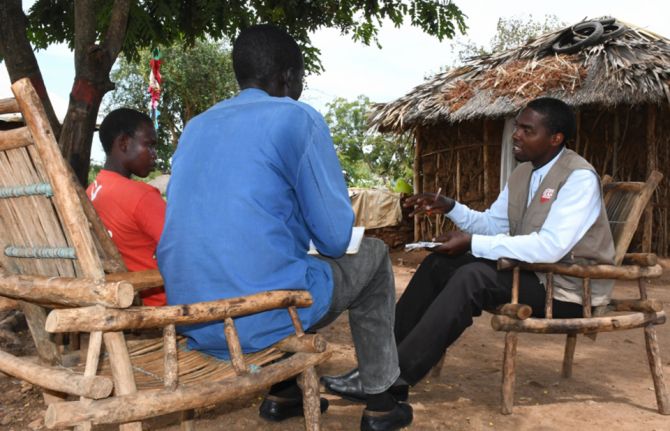
Feature Story
UN Plus meets UN Secretary General
22 May 2007
22 May 2007 22 May 2007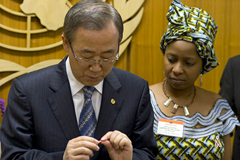
As part of the 61 st session of the General Assembly,
UNPlus met with the United Nations Secretary-
General Ban Ki-moon to brief him on key
achievements of the group.
As part of the 61 st session of the General Assembly, UNPlus– the UN system-wide group of staff living with HIV– met with the United Nations Secretary-General Ban Ki-moon to brief him on the key achievements of the group since its inception in March 2005 and to discuss the opportunities and challenges that UN positive staff face at work.
During the meeting, a delegation of UNPlus members presented the Secretary-General with specialized position papers covering four main issues of concern: stigma and discrimination, confidentiality, medical insurance, and travel restrictions and mobility. The group also made specific requests to the action items outlined in the papers. The meeting also served to evaluate the progress made on the concerned issues and discuss the way forward to improve the workplace environment for all people living with HIV working within the UN system.
“Our requests to the Secretary-General mainly focus on the need to revise the personnel policy and to institute strong administrative procedures to curtail stigma,” said Bhatupe Mhango, UN plus coordinator. “Secretary-General Ban Ki-moon ’s support to UNPlus is critical. We hope he will continue to raise the issues of positive people far and wide-both within the UN system and in his external engagements,” she added.
Twenty-five years into the pandemic, HIV is a reality for workplaces across the world. With approximately 193 member states and an almost equal number of country offices worldwide, the United Nations workforce is no exception.
Addressing the issue within the United Nations, UNPlus was initiated in March 2005 by a group of UN staff members living with HIV, with the support of the UNAIDS secretariat, to create a more enabling environment of all HIV-positive staff members, irrespective of the level of disclosure of their HIV status. UNPlus aims to create an organized and effective voice for people living with HIV within the United Nations system that challenges stigma and discrimination, and contributes to the development of and improvement of existing policies on HIV among United Nations agencies.
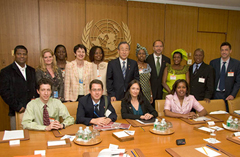
UNPlus was initiated in March 2005 by a group of
UN staff members living with HIV, to create a more
enabling environment of all HIV-positive staff
members.
“UNPlus is remarkable in the sense that in essence it is UN Reform in action. It brings together people from different backgrounds, cultures, beliefs, professions, salary grades, around a common issue. The common issue is ensuring equality, solidarity and acceptance for people living with HIV,” said Mhango.
The first global meeting of UNPlus took place in Amsterdam in March 2006. The meeting was attended by more than 30 people living with HIV working in 11 UN organizations around the world and saw the development of the UN Plus position papers.
Coinciding with the meeting with the UN Secretary-General, UNPlus officially launched its website: http://www.unplus.org/ . The website provides staff members, UN agencies and other external partners with important information concerning HIV in the workplace. It also promotes positive living and highlights the challenges and successes of people living with HIV from around the world. To mark the launch, the web site features an exclusive interview with the UNAIDS Executive Director on the exceptionality of AIDS.
Links:
View Photo Gallery
Listen to interview with Bhatupe Mhango, UNplus Global Coordinator
Visit UNplus website
Read UNplus Position Papers
View exclusive interview with UNAIDS Executive Director, Dr. Peter Piot
Read UN Secretary-General's impressions after meeting UNplus members
Related
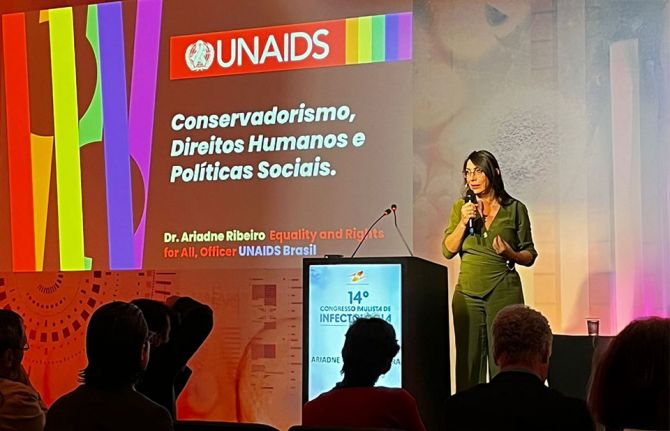 Upholding dignity for everyone: Ariadne Ribeiro Ferreira
Upholding dignity for everyone: Ariadne Ribeiro Ferreira

21 November 2024
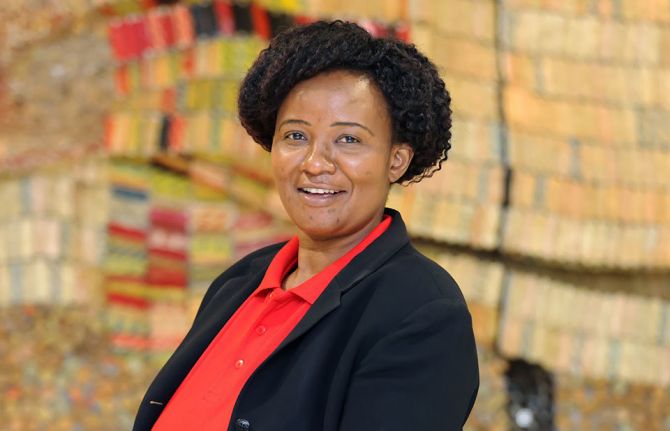 Evelyn Siula: A journey of strength and solidarity
Evelyn Siula: A journey of strength and solidarity
18 November 2024

Feature Story
UN Plus meets UN Secretary General - Photo Gallery
22 May 2007
22 May 2007 22 May 2007During the meeting, a delegation of UN Plus members presented the Secretary General with specialized position papers covering four main issues of concern: stigma and discrimination, confidentiality, medical insurance, and travel restrictions and mobility. The group also made specific requests to the action items outlined in the papers. The meeting also served to evaluate the progress made on the concerned issues and discuss the way forward to improve the workplace environment for all people living with HIV working within the UN system.
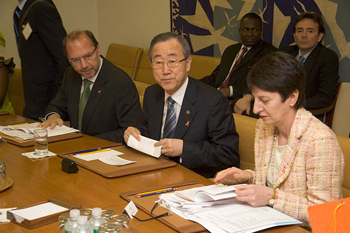
From L to R: UNAIDS Executive Director, Dr.Peter Piot, UN Secretary-General Ban Ki-Moon and UNAIDS Deputy Executive Director Deborah Landey during the meeting with the UNplus group.
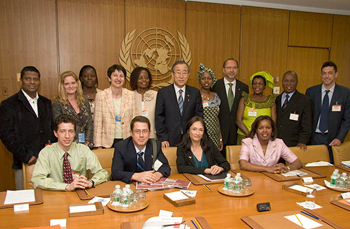
UNplus members with the UN Secretary-General Ban Ki-Moon after briefing him on the key achievements of the group.

UN Secretary-General Ban Ki-moon with UNplus Global Coordinator Bhatupe Mhango after the meeting where she gave an overview of the history of UNplus.
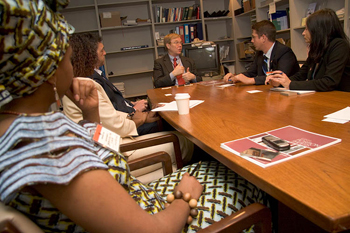
UNplus advisory committee members meeting the UN Medical Services Director. One of the key issues raised by the UNplus group is the provision of a comprehensive and non-discriminatory health insurance for all staff.
All photo credit: UNAIDS/Brad Hamilton
Links:
Read full story
Visit UNplus website
Related
 Upholding dignity for everyone: Ariadne Ribeiro Ferreira
Upholding dignity for everyone: Ariadne Ribeiro Ferreira

21 November 2024
 Evelyn Siula: A journey of strength and solidarity
Evelyn Siula: A journey of strength and solidarity
18 November 2024

Feature Story
International Day Against Homophobia
17 May 2007
17 May 2007 17 May 2007
Homophobia is posing a critical challenge to
moving the AIDS response forward.
Widespread homophobia is posing a critical challenge to the AIDS response in many countries around the world. The International Day Against Homophobia (May 17) shines a spotlight on the urgent need for joint efforts to reduce and end discrimination, violence and criminalization based on sexual orientation.
Men who have sex with men, women who have sex with women and transgender people are all too often faced with stigma, discrimination and violence. These malevolent acts are contributing to the spread of HIV by creating an environment of isolation and exclusion which is preventing people from seeking vital HIV-related information and health services.
Today, around 85 member states of the United Nations consider homosexuality a criminal act and a small number of these countries carry the death penalty. The criminalization of homosexuality instigates widespread fear and shame, forcing people to hide their sexuality, often living in traditional partnerships and practicing in secret for fear of prosecution. Where people cannot live openly and disclose their sexuality the risk of HIV infection is often greatly enhanced as people are too afraid to access HIV prevention services for fear of repercussions or, as is the case in many countries, those services simply don’t exist.
For UNAIDS, the decriminalization of homosexuality and the eradication of violence against sexual minorities has been underlined as fundamental for progress within the AIDS response. At an international consultation on male sexual health held in New Delhi, India in September 2006, UNAIDS’ Director of Policy, Evidence and Partnerships, Purnima Mane stressed, "We have to ensure that homosexuality is decriminalized everywhere, and that homophobia, discrimination and violence against sexual minorities and women are made illegal and socially unacceptable,” she said.
However, progress is being seen, a number of governments are now advocating for the rights of homosexuals, in compliance with numerous international standards such as the Universal Declaration of Human Rights or the Charter of the United Nations.
Since Brazil first presented the draft resolution to the United Nation’s Commission on Human Rights in 2003, advocating against any kind of discrimination based on the ground of sexual orientation or gender identity, over 50 countries have publicly supported this agreement. But still more needs to be done.
“We have to face homophobia in bold and innovative ways. We all know that as long as a society is homophobic there is no way that there can be an effective AIDS response for men who have sex with men [and other sexual minorities]," said Purnima Mane.
Venezuela celebrates ‘A Day Against Homophobia’
Each year, HIV awareness raising activities take place around the world on the International Day Against Homophobia. In Venezuela, UNAIDS is taking part in one such activity by promoting the "Guide on human rights, health and HIV: a strategic guide to prevent and fight discrimination due to sexual orientation or gender identity". This document was prepared by the International Centre for Technical Cooperation on HIV/AIDS, UNAIDS and the Horizontal Group of Technical Cooperation and was recently launched at the IV Latin American and Caribbean Forum on HIV/AIDS held in Buenos Aires.
Venezuela ’s "Day Against Homophobia" celebrations will take place in Merida, a western Andean city that hosts one of the most active and solid Venezuelan civil society networks, the “Merida League Against HIV and AIDS”.
As well as the distribution of the guide, UNAIDS and the Merida League will hold an interactive workshop that will cover basic concepts on sexuality, sexual human rights, and vulnerability to HIV.
“This is the second year in a row that Venezuela celebrates the International Day against Homophobia with activities that raise awareness on this important issue. In accordance with regional initiatives, the launching of this guide, particularly among youth, will promote respect and tolerance towards the gay, lesbian and transsexual community,” said UNAIDS Country Coordinator Venezuela Libsen Rodríguez-Adrian.
Links:
Read Press Release ( en | sp )
Guide on human rights, health and HIV: strategic guide to prevent and fight discrimination due to sexual orientation or gender identity ( sp )
Read the State of Homophobia, ( en | sp ) published by the International Lesbian and Gay Association (ILGA), or visit their website at http://www.ilga.org/
Watch ILGA's video "A Day Against Homophobia" (mpeg, 3,840kb)
Read the Yogyakarta Principles ( en )
Read the International human rights references to human rights violations on the grounds of sexual orientation and gender identity
International Day Against Homophobia
Key populations:
Men who have sex with men
People in prison settings
Uniformed services
Cosponsors:
WHO
UNDP International Day against homophobia and transphobia
Press centre:
Read statement by UNAIDS Executive Director
Multimedia:
Video message from UNAIDS Executive Director
Feature stories:
Anti-homophobia campaign to end discrimination in Latin America (16 May 2009)
El Salvador: Ministerial decree to reduce homophobia in health services (03 April 2009)
HIV prevention hampered by homophobia (13 January 2009)
External links:
Publications:
Reducing HIV stigma and discrimination: a critical part of national AIDS programmes - a resource for national stakeholders in the HIV response (pdf, 1.07 Mb.)

Feature Story
Haiti: UNAIDS strengthening partnerships to ‘make the money work’
17 May 2007
17 May 2007 17 May 2007
UNAIDS Deputy Executive Director Michel Sidibe
met with the Premier Ministre Haitien, Jaques-
Edouard Alexis during a high-level mission to Haiti.
May 2007.
During a high-level mission to Haiti in May, the UNAIDS delegation headed by Deputy Executive Director Michel Sidibe underlined its support to Fondation SOGEBANK, the Global Fund’s Principal Recipient in Haiti, in helping ensure greater coordination of resources for AIDS and developing a culture of multi-sectoral partnership within the country’s AIDS response.
“Haiti has made significant progress on AIDS – with Fondation SOGEBANK playing a key role in developing the response in the country. Now we must work to ensure that all resources and funding for AIDS in Haiti are reaching the people that need them—to ‘make the money work’— every sector needs to be involved,” Mr Sidibe said.
As a first event in a series of initiatives to help develop multi-sectoral partnerships in the country’s AIDS response, Fondation SOGEBANK and UNAIDS gathered a group of around 40 CEOs from leading Haitian companies to discuss the perception of AIDS among leading managers and ways in which the business sector can become more involved in AIDS issues.
The group was presented with a study launched in Haiti in 2005, in preparation of the UNGASS 2008 report, which examines the response to AIDS by 20 of the largest Haitian companies.
The study, the first of its kind to provide a baseline report on business response to AIDS, shows that the Haitian business sector is becoming progressively more involved in the response and a number of companies are implementing HIV prevention activities. The study found that Haiti’s labour-intensive workplaces such as factories have a greater awareness of, and a more active response to AIDS than do banks and similar work sites.
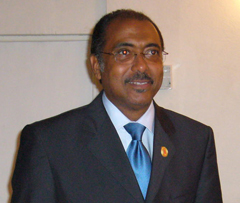
UNAIDS Deputy Executive Director Michel Sidibe
underlined its support to Fondation SOGEBANK,
the Global Fund’s Principal Recipient in Haiti, in
helping ensure greater coordination of resources for
AIDS.
Emphasizing the need for increased action on AIDS within the private sector, Sidibe urged the CEOs to use the study’s findings to help shape their future initiatives. “This study shows us work needs to be done in the areas of policy, legislation and cooperation within businesses. We therefore have to create synergies between governmental actions and the private sector in order to intensify the response,” he said.
To elicit a greater response from industry, UNAIDS and Fondation SOGEBANK will continue consultations with business leaders, encouraging information-sharing, joint resource mobilization and a continuous and open dialogue.
“UNAIDS will seek to assist the private sector in establishing ways for an effective, open cooperation to ensure business response that addresses the impacts and dangers of AIDS on economic growth and development of Haiti,” Sidibe said.
Haiti has the highest HIV prevalence rates in the Caribbean region: 3.8% among adults between 15 and 49 years old.
Links:
More information on Haiti
Visit the Global Fund to fight AIDS, Tuberculosis and Malaria
Visit Foundation SOGEBANK (in french)
Related

Feature Story
Reducing drug related harm
14 May 2007
14 May 2007 14 May 2007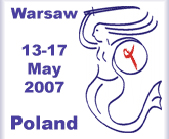
Some 1300 people from over 60 countries are attending the 18th International Conference on the Reduction of Drug Related Harm which is taking place in Warsaw, Poland from 13-17 May. The conference, organised annually, is bringing together frontline workers, researchers, policy makers, members of governments, officials from law enforcement, the judiciary, criminal justice workers, UN officials, members of national and international NGO’s, together with members of drug user organisations to present, discuss and debate the often difficult issues surrounding drug related harm.
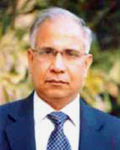
Keynote speech
On the opening day, UNAIDS’ Regional Director for Asia and the Pacific gave one of the keynote speeches and highlighted the inextricable links between injecting drug use and HIV and the achievements and challenges in addressing these complex issues.
Read speech (pdf, 39,9 KB)
View Powerpoint presentation (ppt, 2,96 MB)
Urgent action needed to improve access to HIV prevention and treatment services for people who inject drugs
Despite increased political will and a scale up of funds available for the AIDS response, most people who inject drugs are still being denied access to basic HIV prevention and treatment services.
Read Press Release ( en | fr | ru | es )

The United Nations Office on Drugs and Crime
Injecting drug abuse is among the major forces driving the AIDS epidemic. The United Nations Office on Drugs and Crime (UNODC), a Cosponsor of UNAIDS since 1999, has been mainstreaming HIV prevention into its demand reduction activities globally, with an emphasis on promoting skills development and helping young people live a healthy, drug-free life. UNODC also supports prevention activities to limit the spread of HIV among people who inject drugs, and through them, to their spouses, children and the general population.
HIV/AIDS and injecting drug use - Christian Kroll, UNODC Global Coordinator for HIV/AIDS
HIV/AIDS and injecting drug use - Christian Kroll, UNODC Global Coordinator for HIV/AIDSAround ten percent of all new HIV infections worldwide are due to injecting drug use. But in some regions it's now the main route of HIV transmission - accounting for over 80 per cent of all HIV cases. When did injecting drug use first emerge as a significant factor in the HIV/AIDS pandemic?
Listen to audio interview (mp3, 2.2 Mb)
Reducing drug related harm

Feature Story
AIDS: agent for change
11 May 2007
11 May 2007 11 May 2007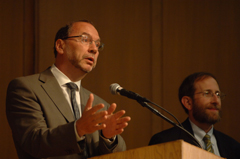
UNAIDS Executive Director Dr Peter Piot giving the
2007 Payne Lecture at Stanford University on May 9.
“AIDS is forcing us to adopt new approaches, look at things differently, and transform the way we do things,” said UNAIDS Executive Director Peter Piot as he gave the 2007 Payne Lecture at Stanford University on May 9.
In remarks punctuated with statistics, Piot reflected on how the epidemic and its response have evolved and how AIDS is changing the world. He also outlined some of the key challenges ahead for sustaining the AIDS response in the long-term.
“We are still in the middle of a crisis. Eight thousand people are dying every single day from AIDS,” he said.
The UNAIDS Executive Director stressed that AIDS has turned into one of the most serious challenges our planet has ever faced, ranking with climate change, international terrorism, and the threat of nuclear war as “one of the defining issues of our time.”
He outlined how major progress has been made on many fronts, including decreasing rates of infection and increasing levels of antiretroviral medicine. And, he underlined, AIDS has become an agent for social change—for example, contributing to the gay rights movement by increasing awareness and leading to a healthy and more open consideration of sexuality and gender roles.

Dr Piot outlined how major progress has been made
on many fronts, including decreasing rates of
infection and increasing levels of antiretroviral
medicine.
Nevertheless, he stressed, much remains to be done.
“The truth is that after 25, 26 years since AIDS was discovered, the end of this epidemic is nowhere in sight. AIDS is both a global problem and a multi-generational problem ,” he said.
“We need young people in the fight against AIDS because it is not going to be over tomorrow,” he added.
Roughly 65 million people have been infected with HIV since 1981. What started as a disease associated with middle-class gay men is now a universal problem.
“There are countries in southern Africa where 30-40% percent of the adults are HIV-positive,” Piot said. “Just imagine what that would be in California — 10, 20 million people living with HIV.”
Numbers like these are especially devastating countries with failing health systems, he said. He also noted that the epidemic is spreading alarmingly quickly in the former Soviet Union and India.
“ AIDS does to society what HIV does to the human body — it weakens the immune system just as it weakens the resiliency in a society,” he said. “It weakens the ability to cope and to deal with difficult things.”
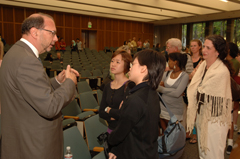
Dr Piot spoke of a “brilliant alliance” that would
combine the efforts of politicians, big business, trade
unions and religious institutions to combat the
disease.
He added that as an exceptional disease, AIDS requires an exceptional response and outlined a number of challenges ahead including increasing and sustaining political commitment and funding, ensuring the money available reaches the people who need it most, advancing scientific developments and addressing the fundamental drivers of the AIDS epidemic – such as gender inequality and violence against women, stigma and discrimination, and the marginalization of homosexuals, drug users, and migrants.
“There is enormous stigma and discrimination attached to the disease, and that’s what makes it so unique,” Piot said. “It’s about sex and drugs; that’s what makes it so difficult to address.”
Piot spoke of a “brilliant alliance” that would combine the efforts of politicians, big business, trade unions and religious institutions to combat the disease. “ We need the brightest and most creative minds to defeat this epidemic,” he said.
All photo credits: UNAIDS/R.Searcey
Related
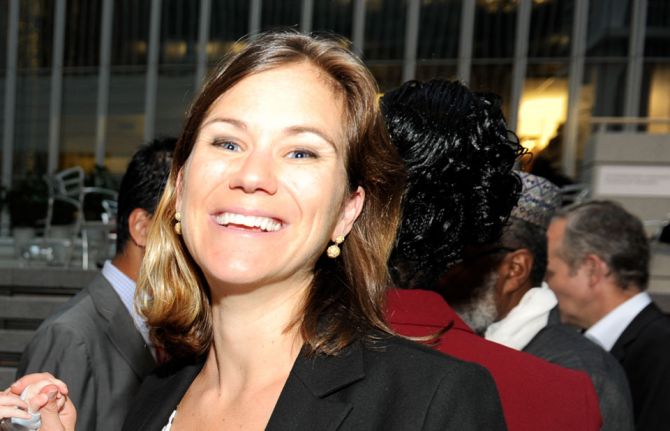 A tribute to Maeve Kennedy Townsend McKean
A tribute to Maeve Kennedy Townsend McKean

09 April 2020
 AIDS care in the Californian desert
AIDS care in the Californian desert
12 February 2019

Feature Story
Injecting drug use: focused HIV prevention works
11 May 2007
11 May 2007 11 May 2007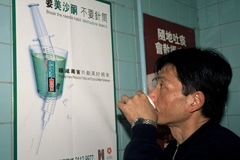
Fewer than 8% of injecting drug sers receive HIV
prevention services
Injecting drug use is estimated to account for nearly one-third of new infections outside sub-Saharan Africa, but fewer than 8% of injecting drug users receive HIV prevention services.
Drug users not only face physical risks of HIV infection, they are also vulnerable to HIV because of their social and legal status. Illegal in many countries, drug use is punishable by incarceration and is highly stigmatized, which further marginalizes people with drug dependence problems. As a consequence, injecting drug users are often not able or willing to access HIV services for fear of recrimination.
This month’s UNAIDS Best Practice review features several HIV prevention programmes that prove ‘high coverage site’ programmes reaching out to more than 50% of the injecting drug user populations with focused prevention interventions, can prevent, stabilize and even reverse HIV epidemics among injecting drug users.
“The scaling up of HIV prevention and even more so care and treatment for drug users is lagging behind in the overall AIDS response. The current HIV prevention coverage rate of 8% shows the problem,” said Anindya Chatterjee, UNAIDS Advisor on Prevention and Public Policy. “We know that focused HIV prevention programmers have been successful in reducing HIV prevalence among people who inject drugs . In countries and cities where harm reduction programmes have been implemented early and on a large scale, HIV prevention programmes have been successful––down to less than 5% in some cases,” he said

The Best Practice shows that ‘High coverage site’
programmes reaching out to more than 50% of the
injecting drug user populations with focused
prevention interventions, can prevent, stabilize and
even reverse HIV epidemics among injecting drug
users.
The document, entitled ‘High Coverage Sites: HIV prevention among injecting drug users in transitional
and developing countries’ was developed from a report first commissioned by UNAIDS to investigate sites in developing and transitional countries which were regarded by international authorities as “high coverage sites” i.e. where more than 50% of injecting drug users had been reached by one or more HIV prevention programmes. In all, seven sites were examined, including Soligorsk, Belarus; Pskov, Russian Federation; Sumy, Ukraine; Dhaka, Bangladesh; Rajshahi, Bangladesh; Hong Kong Special Administrative Region (Hong Kong SAR), People’s Republic of China and Salvador, Brazil.
Found to prove that high-level coverage can be attained by programmes specifically addressing HIV among injecting drug users, the report later became part of the UNAIDS ‘Best Practice Collection’ .
Common features of high coverage programmes
As the Best Practice document underlines, effective approaches to addressing HIV among injecting drug users are controversial in many parts of the world. Therefore, across the programmes featured, substantial work was devoted to overcoming community fears and government concerns about the initiatives. This was generally achieved through advocacy at many levels, starting with the community in the immediate neighbourhood where services were provided, through formal and informal meetings, public information campaigns, involvement by programme managers in multi-sectoral AIDS and drugs committees and, in most cases, by carefully building relationships with selected representatives from the mass media.
In one example highlighted, a joint media campaign organized by the Department of Health, the Narcotics Division of the Security Bureau and the Information Services Department of the Hong Kong Special Administrative Region Government was carried out in 2002 through TV, radio and web to increase public understanding of drugs and AIDS-related issues and the role of methadone, aiming to change public attitudes towards drug users and methadone clients.
Across the featured programmes, regular evaluations and dissemination of results assisted in building political and community support. In some cases, political support resulted in laws and policies, which provided for HIV-specific services, and government funding to ensure programme implementation. “Sustainability is most likely in sites where this type of political commitment exists,” the Best Practice states.
Central to all the featured programmes in the document, the involvement of law enforcement services was a critical determinant for the success of the programmes and crucial in achieving high coverage of injecting drug users. “Programme clients needed to be able to attend needle exchange sites, or methadone or HIV treatment clinics without fear of arrest and outreach workers carrying new and used needles and syringes needed to be able to work without supplies being confiscated,” the report states.

The Best Practice also underlines the importance of
involving injecting drug users as programme staff to
achieve high level coverage and sustainability of
the programmes.
In most of the sites studied, law enforcement services entered into flexible and trust-based working relationships with programme staff, and even participated as full partners in planning and expanding the programmes. The programme manager at the Soligorsk site in Belarus said, “Relations with police are excellent and this has made a real difference— for example, the regular patrol route was altered so that police vehicles were less likely to pass the Programme at the Centre for Hygiene and Epidemiology during its opening hours, meaning drug users were more inclined to attend.”
The Best Practice also underlines the importance of involving injecting drug users as programme staff to achieve high level coverage and sustainability of the programmes. An important factor in the initial growth of the programme in Pskov, Russian Federation was hiring an active injecting drug user as an outreach worker. Without this involvement, the document states, it would have been impossible to establish relations with the injecting drug user community as several previous attempts had been made by the AIDS Centre staff with no results. Here and in other examples, establishing strong and trusting relations with drug users was key to accessing injecting drug user networks.
In the example from Salvador, Brazil, the programme aims at addressing drug using neighbourhoods rather than just drug users individually. This approach means that a wide range of services have been established to form a comprehensive set of drug and HIV-prevention activities as well as general health and social assistance. While the main objective is to provide services to injecting drug users, crack cocaine smokers and other non-injecting drug users, services also reach out to their families, sexual partners, neighbours and other people living in drug-using neighbourhoods.
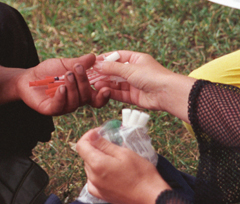
The report underlines that success may not be
immediate and this means that funding for such
programmes needs to be solid, flexible and
sustainable.
Across all the examples within the Best Practice document it is underlined that the programmes are unique to the social, political and cultural settings in which they are implemented.”Rather than replicate models developed by other countries, programme planners and implementers studied the principles underlying programmes and designed appropriate HIV programmes for their sites,” the report states.
However, the report underlines that success may not be immediate–indeed, none of the programmes described achieved high level coverage in the first year of operation—and this means that funding for such programmes needs to be solid, flexible and sustainable. “Funding should not only be flexible enough to allow for growth in service use; a commitment is also needed for at least two years to ensure that programmes reach sufficient numbers of injecting drug users,” notes the report.
Taking into consideration the many challenges faced by the programmes, the Best practice concludes that the coverage achieved through the focused interventions has led to the avoidance or delay of AIDS epidemics among injecting drug users in a number of the countries.. In Bangladesh; Hong Kong SAR; Pskov, Russian Federation; and Sumy, Ukraine, high HIV prevalence among injecting drug users has been avoided despite high prevalence in neighbouring provinces or countries with similar cultures and levels of injecting drug use.
“The best practice case studies show that achieving a high coverage among drug users is highly possible and both HIV prevention and treatment programmes for drug users need dramatic scaling up,” said Anindya Chatterjee.
Links:
Download the Best Practice: ‘High Coverage Sites: HIV prevention among injecting drug users in transitional and developing countries’
Read UNAIDS' Technical Policies on injecting drug users
Other UNAIDS Best Practice reviews:
Learning from experience
A faith-based response to HIV in Southern Africa
Traditional healers join the AIDS response
Focused AIDS programmes in Asia and the Pacific
Related

Feature Story
Drive for AIDS funding in Côte d’Ivoire
09 May 2007
09 May 2007 09 May 2007
The President of Côte d’Ivoire, His Excellency
Laurent Gbagbo (middle), is leading the drive to
mobilize resources for the implementation of the
county’s national AIDS plan.
The President of Côte d’Ivoire, His Excellency Laurent Gbagbo, is leading the drive to mobilize resources for the implementation of the county’s national AIDS plan.
At a roundtable meeting held in Abidjan at the beginning of May, President Laurent Gbagbo and Prime Minister Guillaume Soro welcomed members of the Government, heads of key departments of the public and private sector, civil society groups including networks of people living with HIV, religious leaders and non-governmental organizations to discuss strategy and action to ensure full funding for the implementation of the 2006-2010 National Strategic Plan. High–level representative of the United Nations system and development partners, and the Director of the UNAIDS Regional Support Team for West and Central Africa also attended on the invitation of the Government of Côte d’Ivoire.
The 2006-2010 National Strategic Plan contains clear targets for scaling up towards universal access to HIV prevention, treatment, care and support. It was developed in collaboration with a number of partners and its total cost amounts to US$577 million.
In addition to domestic funding for AIDS from the government itself, financial and technical support for AIDS in Cote d’Ivoire is provided by the President’s Emergency Fund for AIDS Relief (PEPFAR), the Global Fund, the World Bank and the UN system.
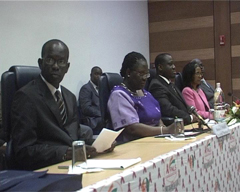
The 2006-2010 National Strategic Plan contains
clear targets for scaling up towards universal access
to HIV prevention, treatment, care and support.
Addressing participants of the roundtable meeting, the President and the Prime Minister emphasized AIDS as “the major challenge for the country’s development” and called for extensive social mobilization and the involvement of all sectors, particularly the civil society and the networks of people living with HIV. They also stressed the important role of public/private partnerships in the national response.
The leaders appealed to partners to harmonize approaches and to strengthen support, especially at this crucial post conflict period, while committing themselves to ensure transparency and accountability with regard to resources management.
The UNAIDS Director of the Regional Support Team for West and Central Africa Dr Bekele Grunitzky had an audience with the President in the presence of the Minister in charge of AIDS the representatives of WFP, UNICEF, WHO and the UNAIDS Country Coordinator. Speaking on behalf of UNAIDS Executive Director Dr Peter Piot, Dr Bekele Grunitzky expressed thanks and appreciation to President Gbagbo and his government for maintaining their commitment to address AIDS. “We congratulate the President and the country on the progress made towards peace, a prerequisite for the development of the country and the scaling up of the AIDS response,” she said.
“We also applaud the government for their evident commitment and leadership on AIDS. UNAIDS and its cosponsors are fully committed to support Côte d’Ivoire throughout the implementation of the National Strategic Plan,” she added.
An estimated 750,000 people are living with HIV in Côte d’Ivoire, over half of whom are women over the age of 15 (400,000). At the end of 2005, HIV prevalence among adults aged 15 – 49 stood at 7.1%.
Links:
More information on Cote d'Ivoire
Related

Feature Story
South Africa marks key AIDS milestones
07 May 2007
07 May 2007 07 May 2007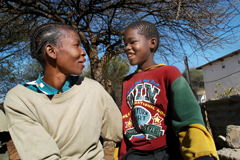
The HIV and AIDS and STI Strategic Plan for South
Africa, 2007 – 2011 details concrete targets to be
reached in specific areas by 2011. Photo credit:
UNAIDS/E.Miller
The AIDS response in South Africa has been given a boost with the successful endorsement of two key processes: the restructured South African National AIDS Council (SANAC) and a new national AIDS plan which will guide South Africa’s response to AIDS over the next five years.
The revamped Council is a high-level multi-sectoral partnership body chaired by South Africa’s Deputy President, Phumzile Mlambo-Ngcuka, with a civil society representative to be elected as the deputy chair. The Council comprises government ministers and leaders from 18 civil society sectors and it will play a leadership role ensuring consensus is built on and maintained on issues of AIDS-related policy and strategy. The Council will also oversee the overall implementation and review of the new National Strategic Plan.
Heralded as South Africa’s most dynamic and comprehensive document on AIDS issues yet, the HIV and AIDS and STI Strategic Plan for South Africa, 2007 – 2011 draws on lessons learned from the country’s response to AIDS over the past decades and details concrete targets to be reached in specific areas by 2011.
On May 2, the South African Cabinet officially endorsed the five-year plan. Key to the development of the plan has been the extensive participatory and consultative process that started in 2006 and involved government officials, a wide range of civil society organizations, the United Nations, academic and research institutions, labour and business.
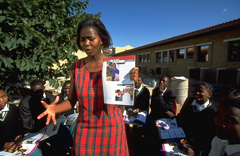
The primary aims of the plan are to cut the number
of new HIV infections by 50% and reduce the impact
of HIV by expanding access to appropriate treatment,
care and support to 80% of all people diagnosed
with HIV. Photo credit: UNAIDS/G.Pirozzi
The primary aims of the plan are to cut the number of new HIV infections by 50% and reduce the impact of HIV by expanding access to appropriate treatment, care and support to 80% of all people diagnosed with HIV. The plan also pledges to reduce the rates of mother-to-child transmission of HIV to less than 5% and to allocate 40% of the projected budget towards HIV treatment.
Mark Heywood, of the AIDS Law Project and Treatment Action Campaign and member of the UNAIDS Human Rights Reference Group, who was involved in the drafting of the document, said he believed it was a "serious and bold" plan. “Its recognition of the centrality of human rights is very important and it provides much-needed targets concerning treatment and HIV prevention, as well as clearly assigned responsibilities for making the plan a reality,” he said.
“This process brought the South African government closer to civil society and has given us, as a nation, the opportunity to find each other and recommit ourselves to fighting the spread of HIV,” said Member of Parliament Hendrietta Bogopane-Zulu, representative for the disability sector within the National AIDS Council and member of the Task Team of national AIDS experts appointed by the Director General of the Department of Health to lead the finalization of the national plan. “It was a collective effort and I believe it will be a collective effort once again as we implement the plan. The plan shows us that today is better than yesterday and tomorrow will be even better,” she said.

At the end of 2006, one in nine or 5.5 million South
Africans were living with HIV, with a prevalence of
18.8% in the adult population. Photo credit:
UNAIDS/P.Virot
Throughout the development of both processes, UNAIDS worked closely with the National AIDS Council and the South African Department of Health. Through the Joint UN Team on AIDS, UNAIDS provided technical support to several civil society consultations during the development process.
“Supporting these processes has been a priority for UNAIDS in assisting South Africa to drive its response forward. We welcome the new and bold leadership in strengthening the AIDS Council and developing the solid national plan. The extensive reaching out to, sharing with and learning from civil society and other partners underlines the movement towards a unified national response to the epidemic,” said UNAIDS Country Coordinator Mbulawa Mugabe who was also a member of the 16-member Task Team.
“Critical now is the timely and effective implementation of the plan, which UNAIDS and the UN family will be supporting as much as we can to make the goals laid out a reality for South Africa,” he said.
At the end of 2006, one in nine or 5.5 million South Africans were living with HIV, with a prevalence of 18.8% in the adult population. HIV prevalence is not yet declining although it has stabilized among young people 15-24 years. National HIV prevalence among pregnant women at Antenatal Clinics was 30.2% in 2005.
In June South Africa will hold the 3rd National AIDS Conference with the theme: Building Consensus on HIV Prevention, Treatment and Care. The conference aims to serve as a platform for deliberations on the key contentious issues relating to HIV prevention, treatment and care. UNAIDS Executive Director Peter Piot will open the National Conference.
Links:
Download the HIV & AIDS and STI Strategic Pland for South Africa 2007 - 2011 (pdf, 1.6 Mb)
South African government Department of Health web site
South African government online
Read more on the 3rd South Africa AIDS Conference
Related

Feature Story
First global consultation on HIV and internally displaced people
04 May 2007
04 May 2007 04 May 2007
According to the Internal Displacement Monitoring Centre of the
Norwegian Refugee Council, there are some 24.5 million
conflict-related IDP’s in at least 52 countries around the world.
Photo credit: UNHCR/H.Coussidis
The first global consultation on HIV and internally displaced people took place in Geneva from 24 to 25 April, bringing together some 45 experts from governments, United Nations agencies, non-governmental organizations and the academic world.
The global consultation, convened by one of UNAIDS’ Cosponsoring organisations the United Nations High Commission for Refugees (UNHCR), was the first of its kind to be held specifically to address the effects of HIV on internally displaced populations (IDP’s).
"This is a neglected area where the needs are great but we frankly don't know enough about the various situations," says Paul Spiegel, head of United Nations High Commission for Refugees (UNHCR) HIV unit. "This is only the beginning of a process which, hopefully, will help us identify gaps, plan joint programmes and improve services for IDPs."
Like refugees, internally displaced persons are civilians who have been victims of violence, persecution or human rights violations, or who have been forced out of their homes by conflict. But, unlike refugees, IDPs remain in their own country.
“Even in the absence of large amounts of data, there is no doubt that internally displaced people are a unique group with special HIV needs,” said Elhadj As Sy, Director of Communications and External Relations at UNAIDS. “Many will have suffered from trauma and violence, including sexual violence, during conflict. Some remain anonymous for various reasons including, security concerns, making their access to HIV services difficult.”
Displaced people, however, are not necessarily more vulnerable to HIV infection, says Spiegel. "In the case of refugees, people at first believed that they had higher HIV prevalence than host communities, but this proved not to be the case. We need to do more research on the effects of displacement on HIV infection."
Colombia , Côte d'Ivoire, the Democratic Republic of the Congo, Myanmar, Nepal and Uganda were highlighted during the consultation along with some eastern European countries.
"It is not possible to have a single approach to all these situations. The situation in each country, and sometimes even in each region within a country, is completely different," said Spiegel. "We hope that we will learn from the different experiences of those attending the consultations. We need everybody to become involved. We need everybody's help."
The consultation was held to raise awareness and result in more effective joint advocacy and programming, as well as in more research on HIV and IDP issues.
According to the Internal Displacement Monitoring Centre of the Norwegian Refugee Council, there are some 24.5 million conflict-related IDP’s in at least 52 countries around the world. Between 70 and 80 percent of them are women and children. The countries with the largest internally displaced populations are Sudan, Colombia, Iraq, Uganda and the Democratic Republic of the Congo.
Under the general umbrella of the Office of the UN emergency relief coordinator, UNHCR has been given the lead role in overseeing the protection and shelter needs of IDPs as well as the coordination and management of camps. Other UN agencies have adopted similar roles in the areas of water, nutrition, health, logistics and telecommunications.
This story first appeared on the UNHCR website on the 24 April 2007. UNHCR strives to ensure that refugees live in dignity, free from discrimination, regardless of their HIV status, and to provide at least the core HIV/AIDS interventions during emergencies.
Links:
Visit UNHCR Website

